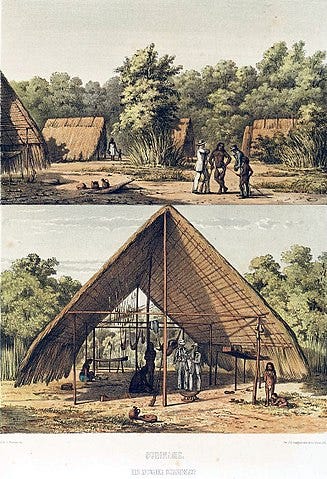The beautiful Carribean island split into two countries by the European nations of France and The Netherlands, was not always the amazing vacation destination that it is known for today. The first inhabitants of the island seem to be the Amerindian people with their cultural artifacts being found and dated around 2,000 B.C.E. They most likely migrated from South America. The first identified culture are the Arawak people who had settled on the island as early as 800 B.C.E till around 300 B.C.E, this is a generalized term for multiple groups of people who settled in the Greater and Lesser Antilles but shared a similar language. These people again more than likely traveled from South America to the island. Around 1300-1400 C.E. they were displaced by the Kalinago people, called the Caribs by Spanish explorers; they would be the dominant culture as Columbus landed. In the early colonial period, the Kalinago had a reputation as warriors who raided neighboring islands. The spread of disease and use of indigenous Kalinagos as slaves in salt mines by the Spanish, the native population plummeted.
Upon arrival by Christopher Columbus on his second voyage (1493–1496), the name was believed to be attributed to honor Saint Martin of Tours. This was actually given to what is now known as Nevis Island because Columbus landed there during Saint Marin’s feast day. The confusion of the poorly charted small islands in the Leeward Islands meant that this name was accidentally transferred to the island now known as Saint-Martin/Sint Maarten. While nominally owned by the Spain at this time, the Island was desired by other European powers such as the French and Dutch. The French wanting to colonize the islands between Trinadad and Bermuda and Dutch using the island as a replenish station between New Amsterdam (New York) and New Holland (Brazil).
The Dutch began to establish a military presence with the construction of Fort Amsterdam in 1631. Unfortunately, due ongoing conflicts with the Kingdom of Spain, in 1633 just two years after the completion of the fort, it was captured. The remaining Dutch colonists were driven off the island and the Spanish reestablished settlements along with their own fortress. While the Dutch tried to wrestle back their colony during the 1630s, it wouldn’t be until 1648 that they returned. The Spanish seeing no strategic nor economic value to the Island, would abandon their settlements and fort. The French and Dutch would both rush to reestablish themselves on the St. Marteen/Martin. Following a series of border skirmishes, the two signed the Treaty of Concordia in 1648, allowing the division of the Island into two separate halves. St. Martin the Northern, larger, French half of the Island and St. Marteen the Southern, smaller, Dutch half of the Island. While minimal changes occurred as the result of sixteen different conflicts between 1648 to 1815, this borders more or less remain to this day.






